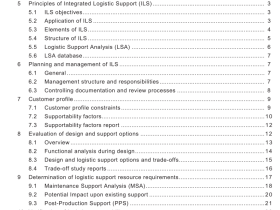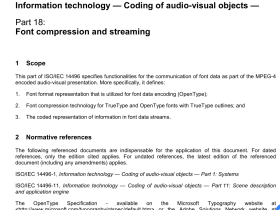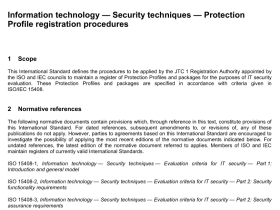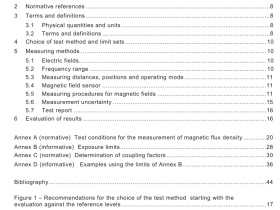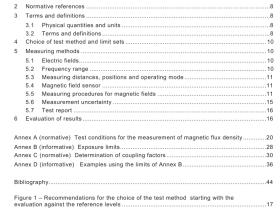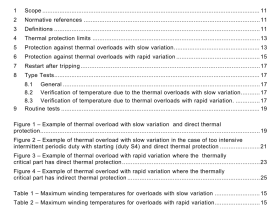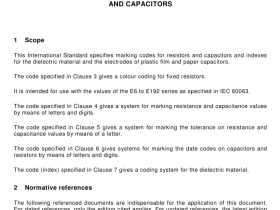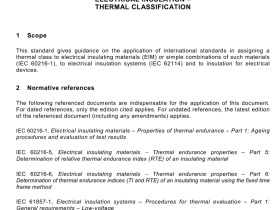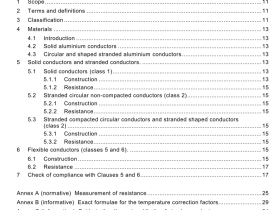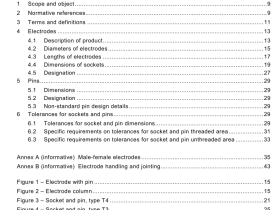IEC 62028 pdf download
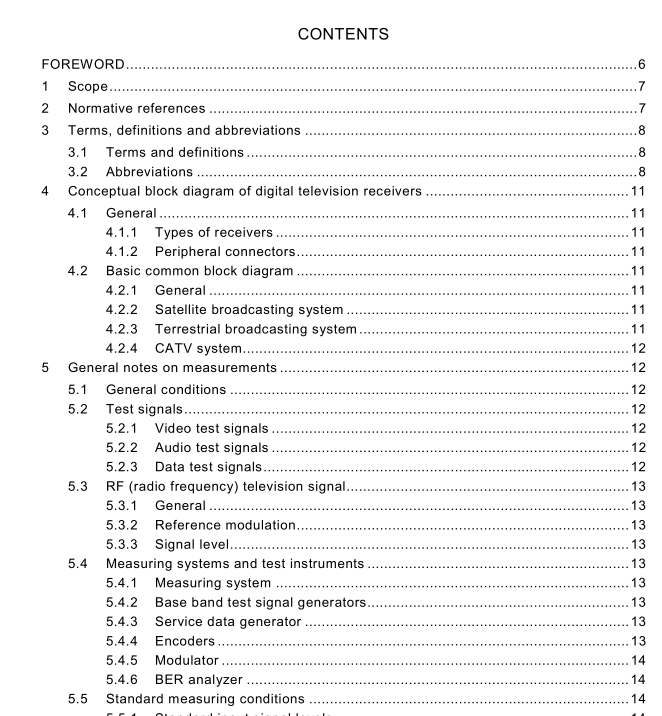
IEC 62028 pdf download General methods of measurement for digital television receivers
4 Conceptual block diagram of digital television receivers
4.1 General
4.1 .1 Types of receivers Digital television receivers are usually designed to be capable of receiving digital television signals in a variety of ways. Examples are direct off-air reception or reception via cabled network in the VHF/UHF bands, and from satellite broadcasts in conjunction with an outdoor unit and a DBS tuner.
Further digital signals can be delivered by the PSTN or ISDN. The signal will usually include information on the service supplied. A return path can be present for interactive TV applications. For non-broadcast signals, the receiver may be used as a monitor to display pre-recorded video or home movies. The methods of measurement described in this standard take into account various options.
4.1 .2 Peripheral connectors Most receivers are provided with connectors for the interface with audio and video signals. Examples are the 21 -pin connector described in IEC 60933-1 and IEC 60933-2 and the Y/C connector described in IEC 60933-5. An example for a digital interface is described in the IEC 61 883 series and an example for an analogue interface is described in IEC 61 880.
4.2 Basic common block diagram
4.2.1 General The basic common conceptual block diagram of digital television broadcasting system is shown in figure 1 . After audio and video signals are converted from analogue to digital, they are compressed. Data signals, which might include EPG (Electronic Program Guide), SI (Service Information), teletext program, etc., are multiplexed with compressed audio and video signals. After channel coding, the TS is modulated and transmitted via satellite, terrestrial, or cable. In digital television receivers, the transmitted signal is demodulated and sent to the error correction block.
After error correction, audio, video, and data signals are demultiplexed, and audio and video signals are decompressed respectively. Audio and video signals are sent to a conventional (analogue) TV receiver (through the peritelevision socket) or to a display and loud speakers, and the data signal is sent to a conventional (analogue) TV receiver (through the peritelevision socket) or to data equipment.
4.2.2 Satellite broadcasting system When the digital television signal is transmitted via satellite, BPSK, QPSK and TC-8PSK modulation formats are used.
4.2.3 Terrestrial broadcasting system COFDM, band-segmented OFDM and 8VSB modulation formats are used in the terrestrial broadcasting system.
5 General notes on measurements
5.1 General conditions
General measuring conditions are according to 3.1 of IEC 601 07-1 .
5.2 Test signals
Test signals are common to all the transmission systems.
5.2.1 Video test signals
5.2.1.1 Still image video signal
The still image video signal shall be electronically generated.
a) Colour bar signal;
b) Ramp signal;
c) Modulated ramp signal;
d) Multiburst signal;
e) 5-steps signal.
5.2.1.2 Moving picture video signal
Under consideration.
5.2.2 Audio test signals
1 kHz sine-wave signal is used.
Frequency variable sine-wave signal is used for measuring frequency characteristics.
5.2.3 Data test signals
Under consideration.
